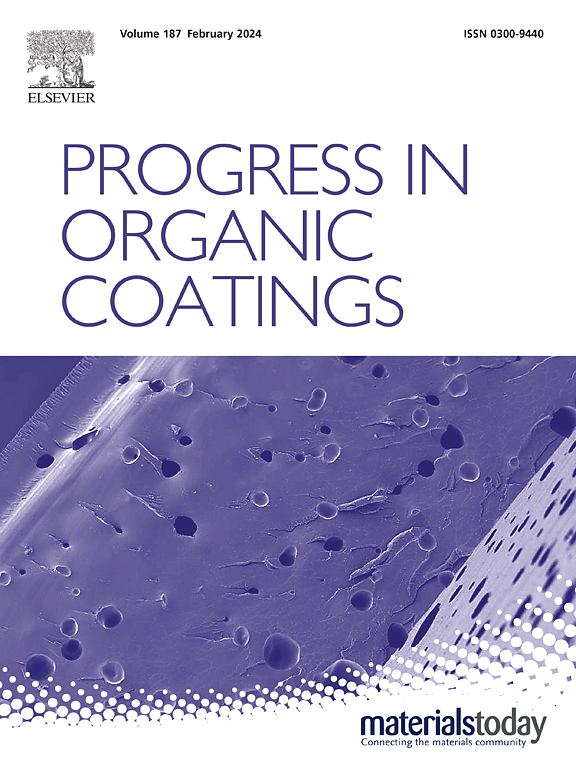Assessment of anticorrosion performance of epoxy coatings through controlling graphitic carbon nitride nanosheet bandgap and morphology
IF 6.5
2区 材料科学
Q1 CHEMISTRY, APPLIED
引用次数: 0
Abstract
Graphitic carbon nitride (GCN) nanosheets have the potential to serve as effective fillers for epoxy (EP) matrices, enhancing the barrier properties against the penetration of corrosive ions. This study investigates the impact of various GCNs including bulk GCN obtained through thermal treatment of urea, large-sized nanosheets (LG) synthesized via ultrasound treatment, medium-sized nanosheets (MG) fabricated by NH4OH and ultrasound treatments, and GCN quantum dots (QDs) formed through acid treatment followed by NH4OH and ultrasound treatments on A36 steel substrates. Among these, EP modified with QD demonstrates proper anticorrosion performance in 3.5 % NaCl solution, maintaining stability from the initial application to 672 h of immersion. The corrosion current density of the QD sample decreased by two orders of magnitude compared to the bulk sample, and after 672 h of immersion, it showed excellent stability with only a slight increase. Corrosion resistance was assessed in both light (L) and dark (D) environments with the QD sample displaying the best corrosion resistance according to the extent of reduction in corrosion current density: (GCN (L) icorr = 1.42 × 10−5 A/cm2, QD (L) icorr = 2.03 × 10−7 A/cm2; GCN (D) icorr = 8.66 × 10−6 A/cm2, QD (D) icorr = 2.03 × 10−7 A/cm2). This might be attributed to an increase to the number of NH2 terminal groups and the oxygen defects due to the acid treatment of bulk g-C3N4. Moreover, the wide bandgap of the GCN in the form of QD further boosts the coating's corrosion resistance in the presence of light.

求助全文
约1分钟内获得全文
求助全文
来源期刊

Progress in Organic Coatings
工程技术-材料科学:膜
CiteScore
11.40
自引率
15.20%
发文量
577
审稿时长
48 days
期刊介绍:
The aim of this international journal is to analyse and publicise the progress and current state of knowledge in the field of organic coatings and related materials. The Editors and the Editorial Board members will solicit both review and research papers from academic and industrial scientists who are actively engaged in research and development or, in the case of review papers, have extensive experience in the subject to be reviewed. Unsolicited manuscripts will be accepted if they meet the journal''s requirements. The journal publishes papers dealing with such subjects as:
• Chemical, physical and technological properties of organic coatings and related materials
• Problems and methods of preparation, manufacture and application of these materials
• Performance, testing and analysis.
 求助内容:
求助内容: 应助结果提醒方式:
应助结果提醒方式:


